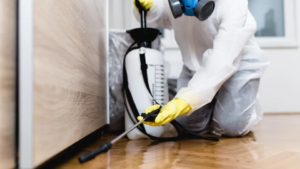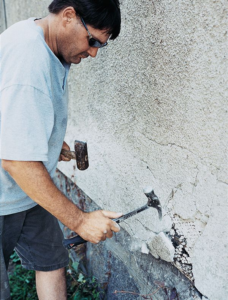When a generator breaks down, it can be a huge hassle and disruption for businesses. Fortunately, Repair Generac Generator services can fix the problem quickly and efficiently.

The first thing to check is the circuit breaker. It may have tripped due to a power surge or overload.
Another possible cause is dirty battery connections. These are usually covered in rust and dirt, making it hard for the battery to make contact with the generator.
If you’re in the market for a generator repair service, it pays to work with an experienced technician. Not only will they diagnose problems and perform repairs, but they can also provide maintenance tips that can prolong the life of your generator. Moreover, a technician will be able to notice small issues that can quickly develop into larger problems if left unchecked. For example, a leaking fuel hose can lead to overheating and other complications.
Performing preventative maintenance on your generator can help keep it running smoothly during a power outage. This maintenance can include things like checking the fuel filter to ensure it’s clean and not clogged, making sure the transfer switch is working properly and isn’t damaged or exposed, examining the engine for proper operation, and lubricating parts regularly. It’s also important to keep a log of your maintenance sessions so you can identify and address any potential problems that may arise.
Aside from preventing breakdowns during a power outage, regular maintenance on a generator can also reduce energy waste and operating costs. This is because well-maintained generators operate more efficiently, resulting in lower energy consumption and overall maintenance expenses.
It’s also important to have the right equipment for generator maintenance and repair. This includes safety gear like gloves and goggles, as well as a safe and well-ventilated workspace. Additionally, it’s a good idea to have a variety of tools and parts for your generator, including wrenches, screwdrivers, voltmeters, and other specialized tools.
It’s also a good idea to have a detailed manual for your specific generator model so you can find the information you need when performing maintenance and identifying problems. You should also keep a maintenance log to record the dates of your maintenance sessions and any issues identified so you can address them accordingly in the future. This will help you avoid costly repairs and extend the life of your generator.
Troubleshooting
While generators are a vital piece of equipment in many homes and businesses, they require regular maintenance to work properly. Skipping routine care only leads to more serious problems and expensive repair costs, and it can also lead to permanent damage to the equipment. Fortunately, most issues with backup generators can be prevented by performing simple troubleshooting techniques and keeping essential tools on hand.
One of the most common reasons a generator fails to start is due to a lack of fuel supply. Insufficient fuel or improperly stored fuel can cause the generator to stop working or overheat. To prevent this from happening, regularly inspect the fuel lines and replace any damaged or clogged ones. Using clean fuel and adding a fuel stabilizer can also help keep your generator running smoothly.
Faulty electrical components and batteries are another common problem that can cause a generator to malfunction or fail to start. It is important to keep an eye on the condition of your battery, spark plugs, and wires, and regularly inspect them for signs of wear. Having a multimeter on hand can help you measure voltage and current to pinpoint any problems quickly. In addition, a set of screwdrivers in various sizes and insulated gloves are also necessary to ensure you can safely open the panels on your generator.
Low oil, coolant, and fuel levels are also a common problem that can prevent a generator from starting. To avoid this, make sure to refill your fuel tank, use the correct type and grade of engine oil, and check the air filter and exhaust system regularly. Adding a crankcase breather can also help reduce the amount of oil your generator loses to leakage.
Faulty sensors and safety mechanisms are often to blame for generator malfunctions, as they may trigger false alarms or shutdowns. These problems can usually be solved by recalibrating or testing the device. During regular maintenance, the generator is also examined and cleaned from potential dirt and debris buildup, and electrical components are disconnected and reconnected to check for any underlying problems.
Repair Options
Depending on the type of problem, repair options will vary. For example, if your generator won’t start, a technician may need to troubleshoot a battery or fuel supply issue. They will also check the control panel and electrical components for issues. This process often includes testing fuses and connectors, replacing worn or damaged parts, and using schematics to determine the cause of the problem. This process is typically conducted with the power to the generator completely turned off and by following stringent safety protocols.
Another common repair is the replacement of a generator part, such as a fuel pump, fan, radiator, or cylinder head. This process involves removing the old part and installing the new one, which can be difficult due to the size of these components. This is usually a heavy repair, which requires a longer downtime of the generator. This is especially true for larger generators and those that are no longer supported by the original equipment manufacturer (OEM).
If you notice that your generator is not producing electricity during a power outage, this can be a sign that it is time for repairs. If you are worried that your generator may need to be replaced, it is a good idea to contact a qualified professional right away. They will be able to assess the condition of your generator and provide you with a repair estimate.
Although some repairs are unavoidable, you can avoid many of these problems by following a regular maintenance schedule and making sure that your generator is properly stored and cared for. This will ensure that the system will be able to function when you need it most, and it will allow minor problems to be detected early, before they become more severe. It will also save you money by preventing the need for expensive repairs or replacing your generator entirely.
Cost
Home generators provide a vital lifeline during power outages, but they require regular maintenance to function properly. Depending on the type and size of generator, repair costs can vary widely. For example, a small portable generator typically costs around $50 to repair, while repairing a larger home generator can cost up to $273.
The most common problems that homeowners encounter with their generators are due to faulty parts or poor maintenance. Many of these issues are easy to diagnose and can be fixed quickly and inexpensively. However, some problems may be more serious and can require the replacement of parts or the entire generator.
Some of the most common issues that require a professional repair include a faulty transfer switch, overheating, electrical malfunctions, fuel system failure, and clogged or damaged intake. In general, it is a good idea to have a qualified technician inspect the generator on a regular basis to spot and fix small problems before they become major issues.
Performing routine maintenance on a generator can help extend its lifespan and reduce the likelihood of repairs or replacements. It can also save money in the long run by reducing fuel consumption, as well as operating and maintenance costs. Moreover, maintaining the generator helps ensure warranty compliance and lowers the risk of safety issues such as carbon monoxide leaks.
When choosing a company for generator repairs, look for one with experience and a proven track record. It should be licensed and insured, with technicians who are trained to handle different types of generators. Lastly, the company should offer 24/7 availability so that you can call them at any time for emergency service.
If you’re thinking about buying a generator for your home, it’s important to understand the different costs involved. For instance, a gas generator is usually more expensive than a diesel or propane-fueled model. This is because the former requires extensive plumbing work to hook up to the home, while the latter is able to use existing gas lines. In addition, a gas generator can be more difficult to maintain, as it must be regularly cleaned of debris and carbon monoxide buildup.







